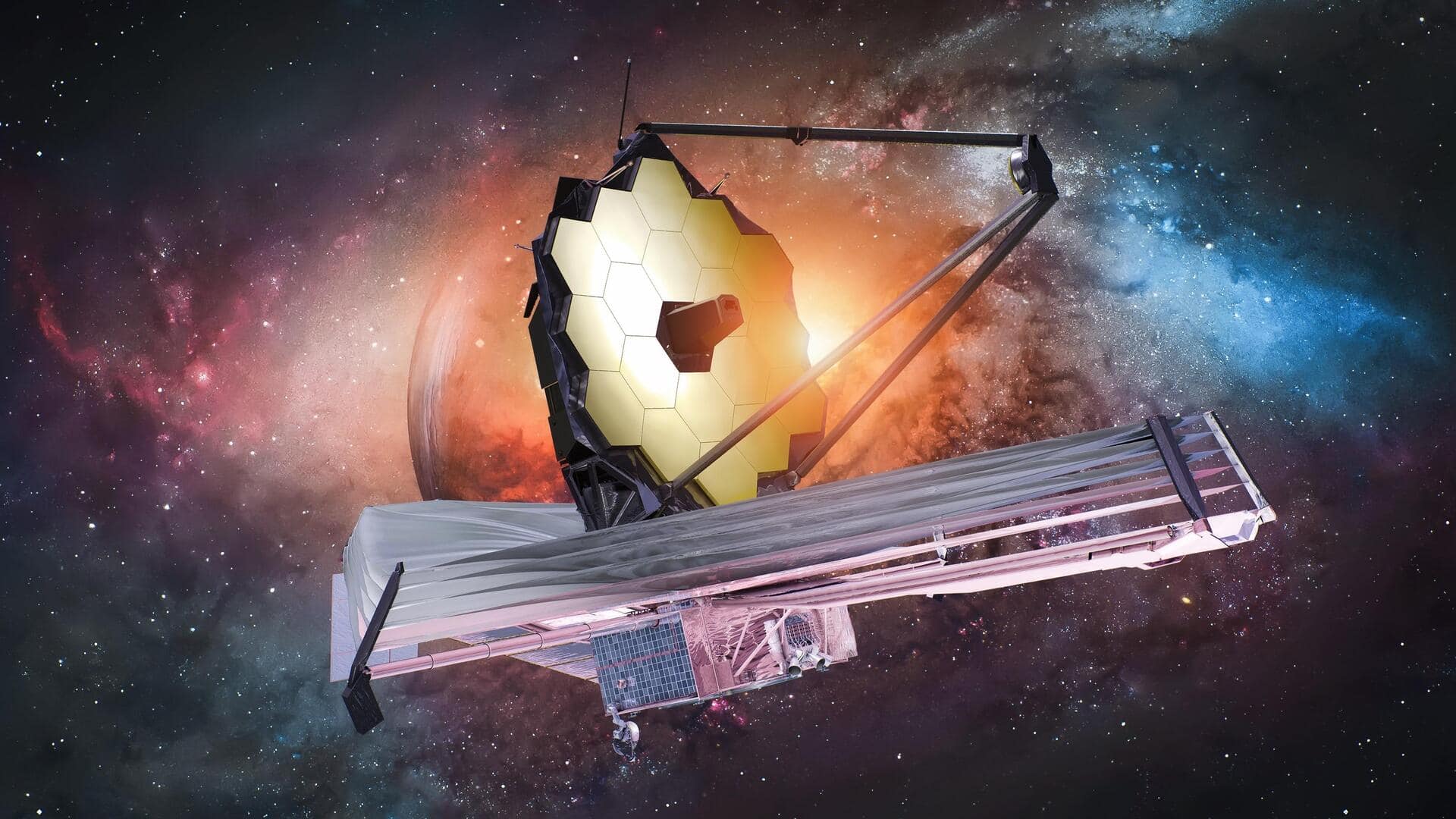
Where iconic spacecraft are located in October's night sky
What's the story
The launch of spaceflight has revolutionized our understanding of the solar system. Over the last 70 years, thousands of advanced spacecraft have been sent on ambitious missions to observe Earth, study our star's domain, or explore interstellar space. These robotic explorers have changed how we see our planet and the universe. Now, let's take a look at where some of these iconic spacecraft are located in October's night sky.
Spacecraft 1
James Webb Space Telescope
The James Webb Space Telescope (JWST), launched on Christmas Day in 2021, is now 145,9671km from Earth. It sits at Lagrange Point 2, a gravitationally stable spot. To find JWST in the night sky, look for the red star Aldebaran in Taurus constellation around midnight this month. Then scan above for the hazy light of Pleiades star cluster; Webb will be about five degrees below it.
Spacecraft 2
Parker Solar Probe
NASA's Parker Solar Probe, which became the first spacecraft to "touch" the Sun on April 28, 2021, is now at a distance of millions of kilometers from Earth. To spot it in October's night sky, look low in the southwestern sky at sunset. First find Antares star in Scorpius constellation, and then locate Parker Solar Probe roughly five degrees to its upper left with Ophiuchus constellation shining above.
Spacecraft 3
Juno spacecraft
The Juno spacecraft, which entered orbit around Jupiter in 2016, is now 464.8 million miles from Earth. To find its location, look for bright stars Castor and Pollux in Gemini constellation during pre-dawn hours this month. Jupiter will be easy to spot as a bright "morning star" shining steadily lower right of these two stars while Juno orbits the planet unseen.
Spacecraft 4
New Horizons spacecraft
NASA's New Horizons spacecraft, which launched in January 2006 and flew by Pluto in July 2015, is now a whopping 5.88 billion miles from Earth. To find its location this month, look for the "teapot" asterism at the center of Sagittarius constellation above southern horizon after sunset. From a dark sky location, you may see Milky Way band running through "spout" of stellar teapot.
Spacecraft 5
Voyager 1
Voyager 1, the most distant human-made object ever launched, is now a staggering 15.72 billion miles from Earth. To find its location this month, look for stars from Ophiuchus constellation close to western horizon after sunset. Then locate highest point light in constellation, the binary star system Rasalhague, and its neighbor Kappa Ophiuchi in the lower right. Voyager 1's approximate position lies halfway along the imaginary line connecting these two stellar giants.